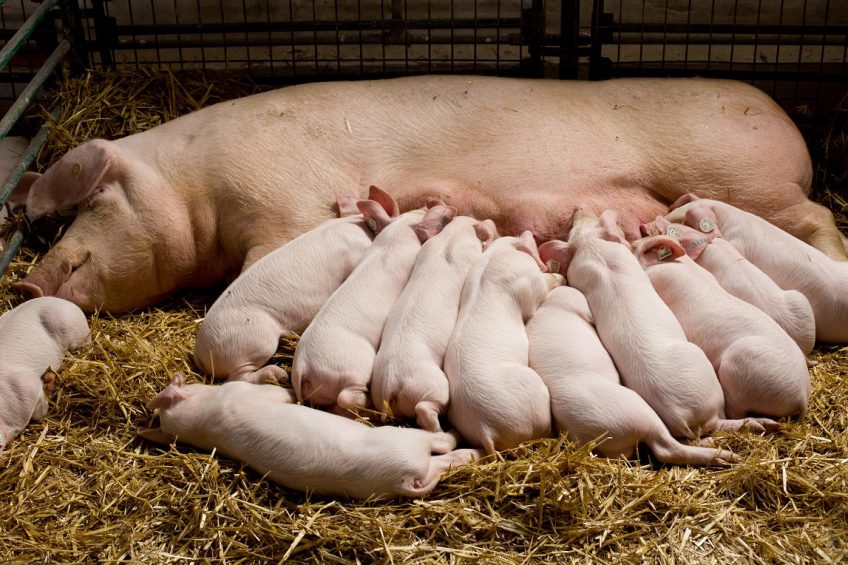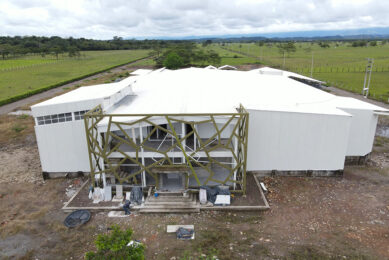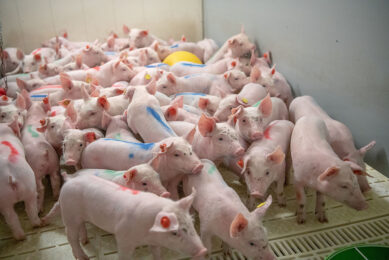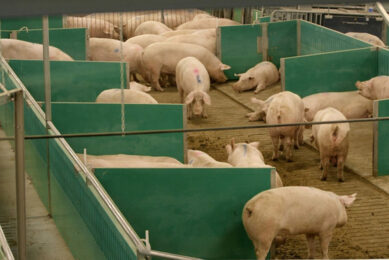Preventing excessive oxidative stress in sows

During the last decades, the average litter size of sows has been increasing significantly thanks to genetic selection, nutritional intervention and farm management. Rapid foetal development during gestation and increased demand of milk during lactation leads to high metabolic demands. This contributes to the excessive production of free radicals and the induction of oxidative stress. Considering the relationship between oxidative stress and reproductive performance, preventing excessive oxidative stress is highly important.
Modern hyperprolific sows have high metabolic demands in gestation and lactation. The rate of oxidation increases as metabolism rate elevates. In all cells, mitochondria as the primary energy-generating system work harder to meet all energetic needs and more reactive oxygen species (ROS), such as free radicals, are generated.
A damaging chain reaction
ROS can cause serious damage to many substances in the body such as lipids, nucleic acids and proteins. Once lipid peroxidation is initiated, a damaging chain reaction takes place. Attack of nucleic acids mutates genomes. Once proteins, including enzymes, are oxidised, their function is weakened or even eliminated. If the concentration of ROS is higher than the concentration of antioxidants, then the body will experience oxidative stress and disease pressure.
Elevated oxidative stress is a likely promoter of some reproductive disorders, such as anovulation, spontaneous abortions, abnormal embryonic development and foetal growth restriction. Sows under higher oxidative stress had less piglets born alive (9.6 vs 11.2) and lower litter weight (13.3 kg vs 16.6 kg) at day one than sows under lower oxidative stress. Litter weight gain and litter size were also negatively correlated (P<0.05) with oxidative stress.>
Health status of the sow impaired
This increased oxidative stress during gestation and lactation is likely to influence not only the litter performance, but also the health status of sows including impaired milk production and longevity. This stress also has a detrimental effect on the intestines of the animals. It does not only decrease the villus/crypt ratio, resulting in a lower digestive capacity, but also reduces the barrier function.
A reduced barrier function results in a higher permeability for toxins and bacteria, which as a consequence can induce the activation of the immune system and inflammation. Endotoxins produced by various bacteria (Escherichia coli, Staphylococcus aureus, etc.) play an important role in the pathogenesis of mastitis-metritis-agalactia (MMA). A small amount of endotoxin can dramatically suppress prolactin and hence increases the risk of MMA in sows.
Countering oxidative stress
Disease pressure caused by oxidative stress is actually a lack of antioxidants. It has been shown that during the whole reproductive cycle, the quantity of endogenous antioxidants (Table 1), activities of antioxidative enzymes and overall antioxidant capacity were decreased. Extra exogenous antioxidants are needed to cope with the imbalance of ROS and antioxidants. Vitamin A, vitamin E, and some trace elements such as selenium are all the commonly known antioxidants in swine diets. However, vitamins and minerals have antagonism effects. An increase of one substance might influence others’ absorption and functions.
Growing attention is being paid to natural antioxidants, being polyphenolic compounds, extracted from plants due to its safety and powerful antioxidant properties. Plant extracts, generally used in food for their flavouring characteristics and in medicine for their physiological effects, often have strong H-donating activity making them really effective antioxidants.
Benefits of polyphenolic compounds
Fan et al.,(2016) show that a supply of polyphenolic compounds at the beginning of pregnancy leads to improvements in litter born alive (P<0.01) and piglet born healthy (p><0.01) and a decrease in stillborn (p>< 0.05) at farrowing when compared with the control. Moreover, combining antioxidants may increase their effectiveness. It is generally accepted that no one antioxidant alone can lead to health benefits but the combination as found for example in fruits and vegetables, is the active principle that leads to synergistic effects.
The bioavailability of polyphenols, more than 8000, is extremely diverse. Therefore, Nuscience has done a great deal of work to screen which polyphenolic compounds have a powerful biological antioxidant capacity and have the great synergy effect when combined. This screening resulted in a powerful natural antioxidant concept: Vitanox.
Antioxidative capacities proven in vitro
The promising antioxidative capacities as described above were proven in an in vitro assay developed by the university of Ghent and Antwerp. This model uses a layer of epithelial cells from pigs and investigates among others the passage rate of a high molecular test molecule across the epithelium. Normally these molecules cannot pass a healthy membrane, but when the barrier function is compromised they can pass. Oxidative stress is generated with H2O2 incubation.
As shown in Figure 1, the barrier function is clearly compromised after inflicting oxidative stress, resulting in an increased permeability for toxins, bacteria and feed-associated antigens. By adding specific selected polyphenols (Vitanox) it was possible to reduce this negative effect to a minimum. Therefore, adding the product can help sows against oxidative stress and have a better reproductive performance and health status.
References available on request











